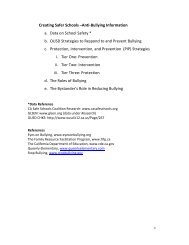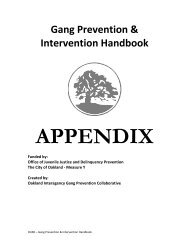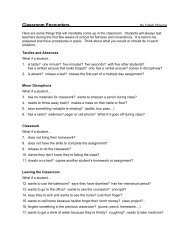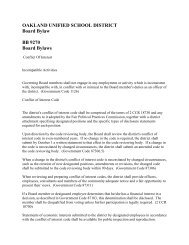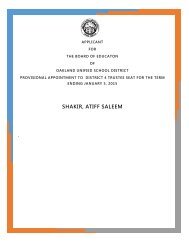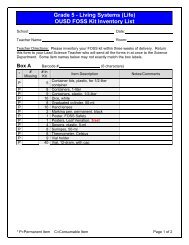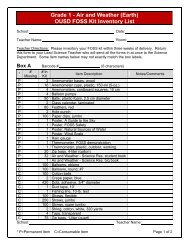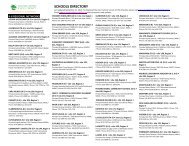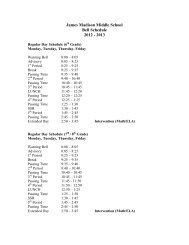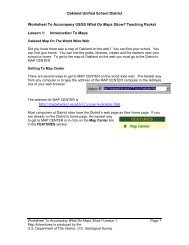Science Framework, part 1 - Free Downloads (CA Dept of Education)
Science Framework, part 1 - Free Downloads (CA Dept of Education)
Science Framework, part 1 - Free Downloads (CA Dept of Education)
- No tags were found...
Create successful ePaper yourself
Turn your PDF publications into a flip-book with our unique Google optimized e-Paper software.
10Chapter 1Introduction tothe <strong>Framework</strong>on complete programs that cover allthe standards at every grade level. Thecriteria for evaluating K–8 science instructionalmaterials (see Chapter 9)state: “All content Standards as specifiedat each grade level are supportedby topics or concepts, lessons, activities,investigations, examples, and/orillustrations, etc., as appropriate.”At the high school level, the <strong>Science</strong>Content Standards document does notprescribe a single high school curriculum.To allow LEAs and teachers flexibility,the standards for grades ninethrough twelve are organized as contentstrands. There is no mandate thata <strong>part</strong>icular content strand be completedin a <strong>part</strong>icular grade. Studentsenrolled in science courses are expectedto master the standards that apply tothe curriculum they are studying regardless<strong>of</strong> the sequence <strong>of</strong> the content.Students in grades nine through twelveuse instructional materials that reflectthe <strong>Science</strong> Content Standards and thisframework, and LEAs must criticallyreview the standards maps that are nowto be provided by publishers <strong>of</strong> highschool instructional materials. 16The California Standards Tests forgrades nine through eleven pertainspecifically to the content <strong>of</strong> the <strong>part</strong>icularscience courses in which studentsare enrolled. The CaliforniaDe<strong>part</strong>ment <strong>of</strong> <strong>Education</strong> makes blueprintsfor those tests and sample questionsavailable to the public. Localeducational agencies are encouraged toreview and improve (as necessary) theirhigh school science programs toachieve the following results:1. All high school science courses thatmeet state or local graduation requirementsor the entrance requirements<strong>of</strong> the University <strong>of</strong> Californiaor The California State Universityare based on the <strong>Science</strong> ContentStandards.2. Every laboratory science course isbased on the content standards andensures that students master boththe content-specific standards andInvestigation and Experimentationstandards.3. Every science program ensures thatstudents are prepared to be successfulon the California Standards Tests.4. All students take, at a minimum, twoyears <strong>of</strong> laboratory science providingfundamental knowledge in at leasttwo <strong>of</strong> the following content strands:biology/life sciences, chemistry, andphysics. Laboratory courses in earthsciences are acceptable if prerequisitecourses are required (or provide basicknowledge) in biology, chemistry, orphysics. 17Effective science programsdevelop students’ command <strong>of</strong>the academic language <strong>of</strong>science used in the content standards.The lessons explicitly teach scientificterms as they are presented inthe content standards. New words(e.g., photosynthesis) are introduced toreflect students’ expanding knowledge,and the definitions <strong>of</strong> common words(e.g., table) are expanded to incorporatespecific meanings in science. Developingstudents’ command <strong>of</strong> the academiclanguage <strong>of</strong> science must be a <strong>part</strong> <strong>of</strong>instruction at all grade levels (kindergartenthrough grade eight) and in thefour content strands (grades ninethrough twelve). Scientific vocabulary isimportant in building conceptual understanding.Teachers need to provide



